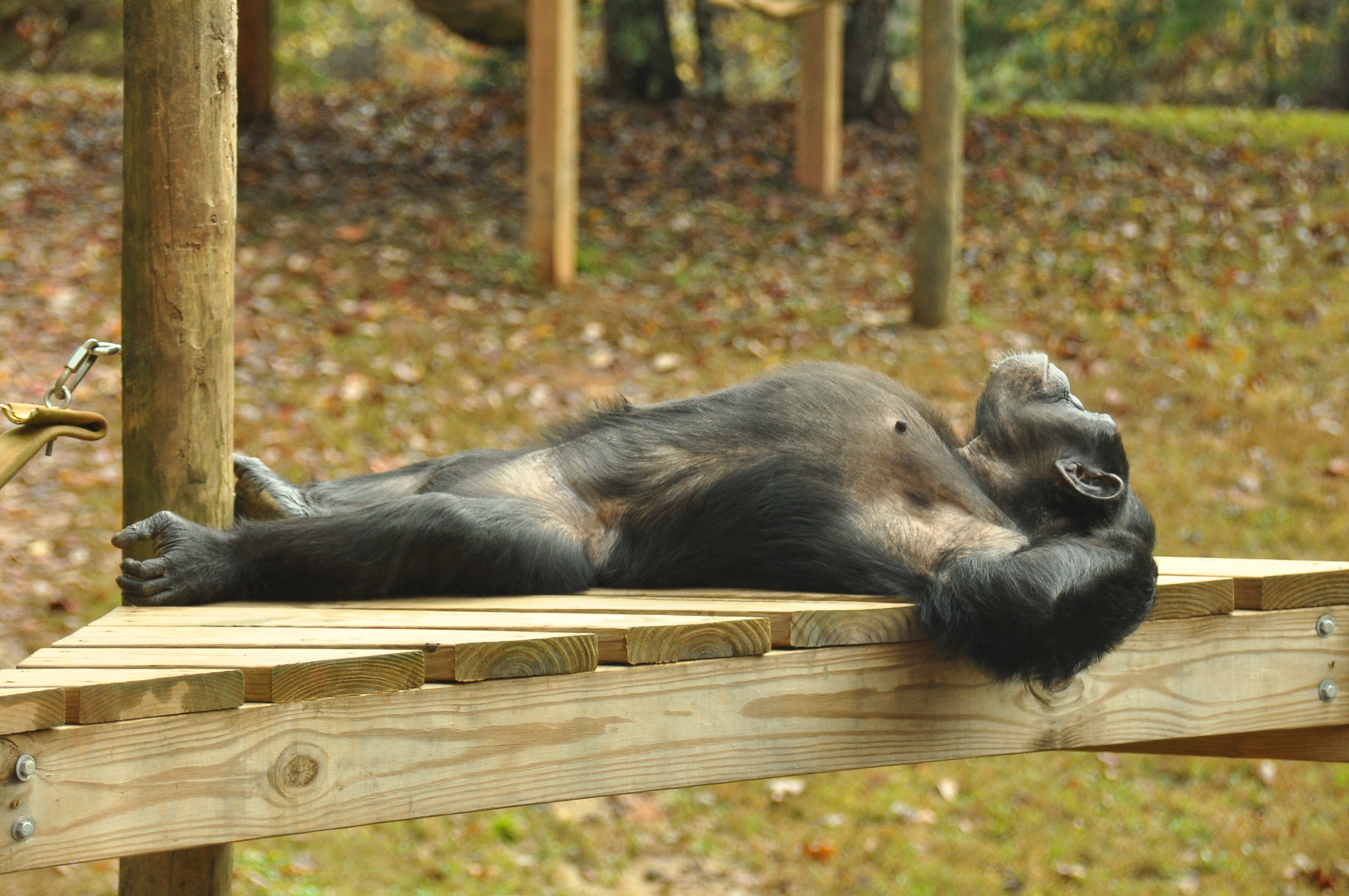Do you know these chimp facts?
- Chimpanzees are “great apes.” The other great apes are bonobos, gorillas, orangutans, and humans.
- Chimpanzees and humans share approximately 95% of their DNA; old studies reported a 98% match but a study in 2002 showed that a 5% divergence is more accurate. Chimpanzees are more closely related to humans than they are to gorillas!
- Chimpanzees are endemic to the forests and savannahs of equatorial Africa. Their current range spans 21 African countries.
- Chimpanzees are endangered due to habitat loss and hunting. Scientists estimate there are between 170,000 and 300,000 chimpanzees currently living in the wild.
- According to the Project ChimpCare census, there are approximately 2,000 chimpanzees in the United States. At one time, the majority of these chimpanzees lived in laboratories, but today there are more chimpanzees living in sanctuaries than any other captive setting!
- Chimpanzees can live up to 45 years in the wild and up to 60 years in captivity.
- Baby chimpanzees can be identified by their small size and a tuft of white hair on their backside that disappears when they reach adolescence.
- Chimpanzees are frugivores, which means their main food staple is fruit. They also eat leaves, nuts, seeds, birds’ eggs, and insects. Some groups of chimpanzees hunt and eat colobus monkeys and other small mammals. Learn about the diet we provide in sanctuary.
- Dr. Jane Goodall discovered tool use by wild chimpanzees in 1960 when she observed a chimpanzee using blades of grass to extract termites from a termite mound. Chimpanzees have also been observed using stones to crack open nuts and using sticks to extract honey from bee hives. See how we built a termite mound.
- At night, chimpanzees build sleeping nests in trees using carefully-selected branches and leaves. Watch how the chimps build nests in sanctuary.
- Chimpanzees live in fission-fusion societies - large communities of up to a few hundred chimpanzees, with smaller subgroups that break off from the community temporarily. Read our Blog series on how we facilitate building these families.
- Chimpanzees communicate using gestures, facial expressions, and vocalizations. They show affection for one another by embracing, touching hands, and even kissing. Chimpanzees laugh when they play. You can learn to "speak" chimpanzee in this video.
Chimpanzees should never be pets.
They are dangerous because of their impressive strength and unpredictable behavior, and their complex social and emotional needs cannot be met in human homes.

Chloe relaxing in the Peachtree Habitat.
Won't You Help?
This project would not be possible without our many generous individual supporters and volunteers. We rely on donations to fulfill our mission, including caring for our existing residents and expanding the sanctuary to accommodate those chimpanzees still waiting in the lab.
Won’t you help us bring the remaining chimps to sanctuary by supporting Project Chimps today? Please donate today because...
